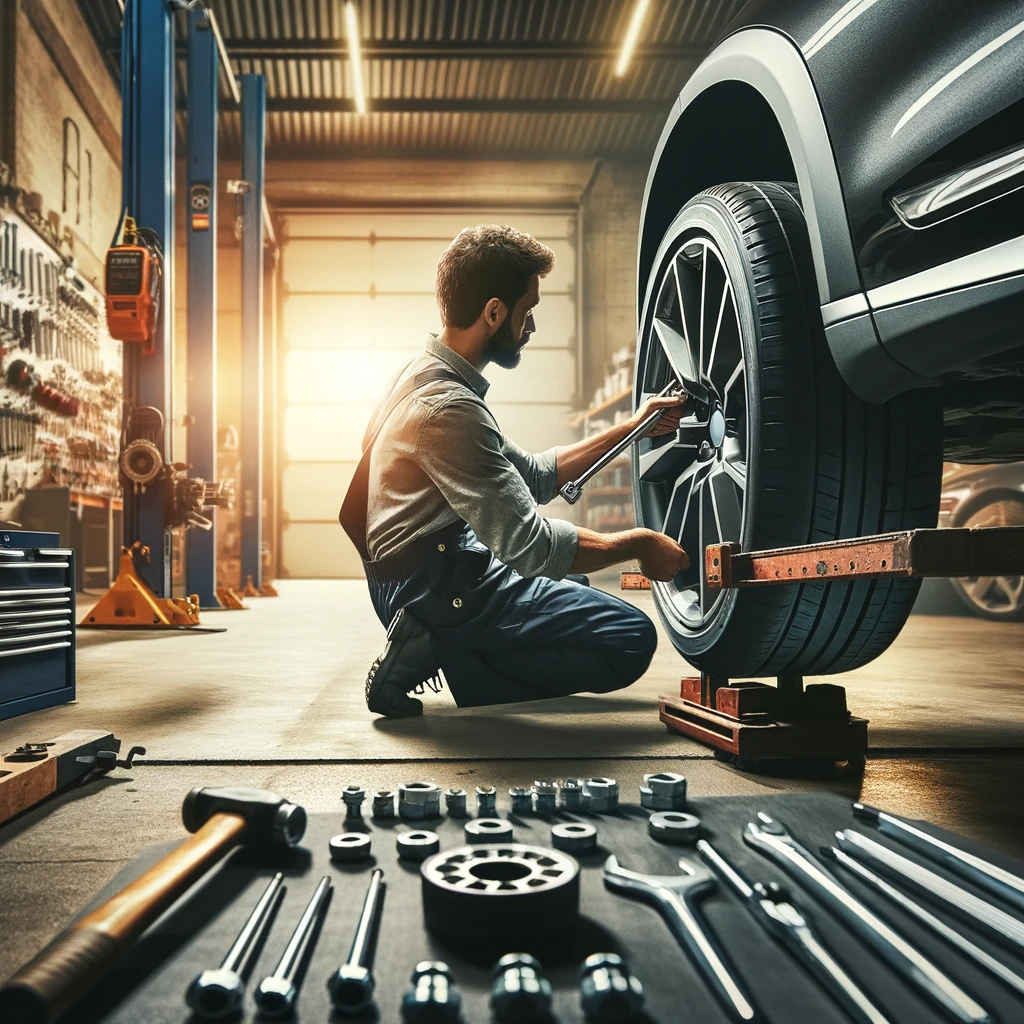Table of Contents



The Impact of Tire Alignment on Vehicle Performance
Tire alignment is a critical yet often overlooked aspect of vehicle maintenance that directly influences handling, fuel efficiency, safety, and tire longevity. Proper alignment ensures that the tires meet the road at the correct angle, the wheels are pointing straight, and the tires are centered in the wheel wells. This guide explores the profound impact of tire alignment on vehicle performance and why regular checks are essential.
Understanding Tire Alignment
Tire alignment is not just about keeping the wheels straight—it involves adjusting the angles of the tires so they make optimal contact with the road. Three key alignment angles influence how a vehicle handles and how evenly the tires wear:
- Camber – The inward or outward tilt of the tire when viewed from the front of the car.
- Negative camber improves cornering grip but can cause uneven tire wear.
- Positive camber may be used in off-road applications but can reduce handling performance.
- Toe – The inward or outward angle of the tires when viewed from above.
- Toe-in (front edges pointing inward) enhances straight-line stability.
- Toe-out (front edges pointing outward) improves responsiveness in corners.
- Caster – The angle of the steering axis when viewed from the side of the vehicle.
- A positive caster provides better straight-line stability and steering feel.
- A negative caster may cause unstable handling at high speeds.
Misalignment in any of these areas can negatively impact vehicle performance, safety, and efficiency.
Key Factors Influenced by Tire Alignment
1. Tire Wear
Impact of Proper Alignment: Ensures even tire wear, extending the lifespan of your tires.
Impact of Poor Alignment: Leads to uneven wear patterns, requiring premature tire replacement.
2. Fuel Efficiency
Impact of Proper Alignment: Reduces rolling resistance, improving fuel economy.
Impact of Poor Alignment: Increases friction, making the engine work harder and reducing fuel efficiency.
3. Handling and Steering
Impact of Proper Alignment: Ensures a smooth, predictable driving experience.
Impact of Poor Alignment: The vehicle may pull to one side, making steering more difficult and unpredictable.
4. Safety
Impact of Proper Alignment:Enhances traction and stability, reducing the risk of accidents.
Impact of Poor Alignment: Can lead to handling difficulties, increasing the chance of losing control.
5. Suspension Health
Impact of Proper Alignment: Distributes stress evenly across suspension components, preventing excessive wear.
Impact of Poor Alignment: Causes uneven stress on suspension parts, leading to premature failure.
Real-Life Example: The Impact on Everyday Driving
Imagine driving a vehicle with misaligned tires:
- The car pulls to one side, requiring constant steering correction.
- You notice uneven tire wear, forcing you to replace tires sooner than expected.
- Your fuel efficiency decreases, costing you more at the pump.
Now, consider a vehicle with proper alignment:
- The ride is smooth and stable, requiring minimal steering adjustments.
- Tires wear evenly, maximizing their lifespan.
- You experience better fuel economy, saving money over time.
Proper alignment enhances both comfort and cost savings, making it a crucial aspect of vehicle maintenance.
How Often Should You Check Tire Alignment?
| When to Check Alignment | Reason |
|---|---|
| After a Significant Impact | Hitting a pothole, curb, or debris can knock wheels out of alignment. |
| With Seasonal Tire Changes | Ensures new or rotated tires are properly aligned for even wear. |
| If You Notice Uneven Tire Wear | A clear sign of alignment issues that need correction. |
| If Steering Feels Off-Center | Misalignment can cause the steering wheel to tilt even when driving straight. |
| Manufacturer Recommendation | Most vehicles require alignment every 2 years or per specific mileage intervals. |
Ignoring alignment checks can lead to long-term vehicle damage and higher repair costs.
Related Maintenance Tips
To maximize tire longevity and performance, combine alignment checks with other tire maintenance practices:
Regular Tire Rotation – Ensures even wear and extends tire life.
Checking Tire Pressure – Improves traction and fuel efficiency.
Balancing Tires – Prevents vibrations and uneven wear.
Impact of Tire Alignment: The Necessity of Proper Alignment
| Aspect of Vehicle Performance | Impact of Proper Alignment | Impact of Poor Alignment |
|---|---|---|
| Tire Wear | Even wear, extending tire life. | Uneven wear, reducing lifespan. |
| Fuel Efficiency | Improved fuel economy due to reduced rolling resistance. | Decreased efficiency due to increased resistance. |
| Handling & Steering | Smooth, predictable handling. | Vehicle pulls to one side, affecting steering. |
| Safety | Improved road grip and stability. | Increased risk of accidents due to poor traction. |
| Suspension Health | Maintains suspension integrity. | Extra strain on suspension components, leading to costly repairs. |
Maintaining proper tire alignment enhances safety, extends the life of your tires and suspension, and improves fuel efficiency.
Final Thoughts: Why Proper Tire Alignment Matters
✅ Benefits of Regular Tire Alignment:
✔️ Prevents premature tire wear, saving you money on replacements.
✔️ Boosts fuel efficiency, reducing fuel costs.
✔️ Improves steering stability, leading to a safer driving experience.
✔️ Protects suspension components, minimizing expensive repairs.
Tire alignment is not just about keeping your wheels straight—it directly impacts vehicle performance, safety, and long-term maintenance costs. By prioritizing regular alignment checks, you enhance your driving experience and extend your vehicle’s lifespan.
Keep your wheels aligned, and your car will reward you with better performance, safety, and savings!
Additional Resources
Check out the best performance car gear available on the market.


